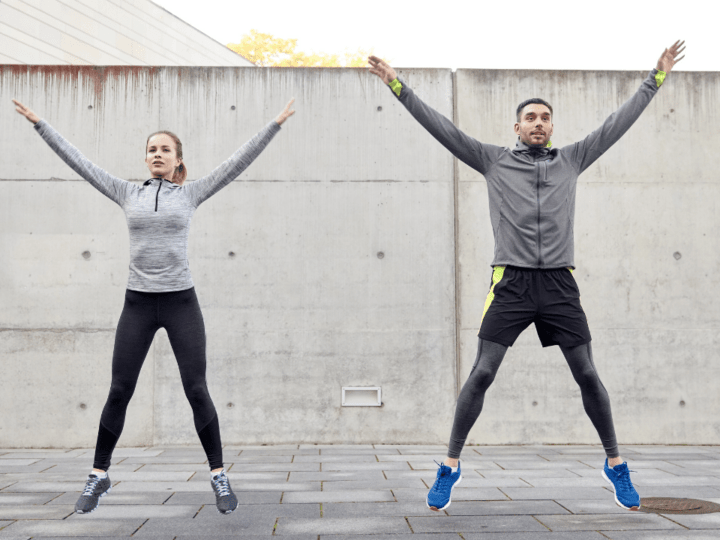I guess it’s confession time. I kind of have a love-hate relationship with hiking. What I love most is being out in nature, exploring the forests and local trails and chasing butterflies.
Now for the part that gets me anxious in the morning before a hike and whenever I look up while out on a hiking trail … going uphill, especially those very steep mountain trails that just look like a solid wall.
I have always struggled and felt like I didn’t have enough power to just keep pushing to get to the top. I made it to the top every time, but with lots of stops for breathing and drinking water, and taking photos (as an excuse to breathe and give my legs a rest).
I decided I had enough and needed to do something, so I went to my local gym and spoke to a trainer to find out what exercises I can do to help me hike uphill better. This is what I learned:
Table of Contents
Which Exercises Give Explosive Power for Hiking Uphill?
There are numerous exercises you can do on your non-hiking days that will help you develop more leg strength so you can hike uphill and not feel like the most unfit person ever (even when you aren’t). The exercises and their variations to keep things interesting include a combination of plyometrics, cardio, and strength training, and you can do these in repetition sets and exercise for 30 minutes, or you can do an interval training workout. The best exercises to give you explosive power for uphill hiking are jumping jacks, squats, lunges, step or uphill runs, step-ups, burpees, and calf raises. For most of these exercises, you can try out variations to keep your exercise routine interesting.
The 6 Best Exercises to Help You Hike Uphill Better
My local gym trainer shared that these are the best exercises you can do so you have enough stamina to hike uphill. I have since combined these into a cardio routine I do 3-4 times a week since I go hiking twice a week.
Uphill Exercise 1: Jumping Jacks
Before I start my cardio exercise routine to help me hike better uphill, I do some general stretches for about 5 minutes, and then I start with 30-40 seconds of jumping jacks.
This exercise boosts my heart rate and it works my legs and arms.
Uphill Exercise 2: Squats
Not everyone is a fan of doing squats, but I’ve found that if I just focus on that one spot in front of me, I can get through a set or two quite well. The benefit of doing squats is that this exercise boosts leg strength, which is what you need when you hike uphill.
There are different kinds of squats I include in my cardio routine on non-hiking days. I try to do 2 sets of each every week, but I also switch it up so I don’t get bored. The types of squats I do are:
- Normal squats where I start with my feet shoulder-width apart and go down into a normal squat as low as is comfortable, then back up into a straight standing position, and repeat.
- Squat pulses where I do a normal squat, but instead of getting back up straight away, I pulse for 5-10 seconds in the squat position.
- Jump squats where I do a normal squat and explosively jump up, pushing through my legs and feet to get off the ground, and then go back into a squat, and repeat.
- Single-leg squats help improve my agility and balance, so I keep my arms out in front of my body, and then squat down on one leg while I engage my core. I do 5-10 reps with one leg and then switch to the other leg for 2-3 sets.
- Goblet squats where I keep a dumbbell or kettlebell in front of me, and then squat. The weights have the added benefit of working out my arm and hand muscles, so when I need to climb over rocks on some rougher trails, I have the upper body strength to do so.
Uphill Exercise 3: Lunges
Lunges are another great exercise that has helped improve my leg strength. Squats focus on building strength in my upper legs, while lunges work my thigh muscles and glutes.
I do a few types of lunges:
- Walking lunges mimic walking (and hiking) so this works my calves, upper leg muscles, and glutes. Instead of a stationary lunge, I stand up straight, take a step forward to get into the lunge position, and then step forward with the other leg into a lunge so I “lunge walk.”
- Scissor hop lunges are where I stand up straight and then go into a lunge position with my left leg. Instead of slowly getting back up to switch legs, I hop or jump, switching the front left leg with the right leg, which is now in front.
Uphill Exercise 4: Step Runs
Doing step or bleacher runs is a great endurance and stamina building exercise. Since I run upstairs, I use the same muscles as I would when I hike uphill. There is also a small hill close to where I live, and I sometimes choose to go running up this hill instead of the steps for a change in scenery.
Uphill Exercise 5: Step-Ups
Another great exercise to build leg muscle strength is step-ups. When I first started with this uphill hiking exercise routine, my step-ups were not onto something very high. I had a little bench I used, but since my legs have gotten stronger and I’ve gotten fitter, I’ve increased the height of the step-ups.
Uphill Exercise 6: Burpees
I generally end my exercise routine with 10-15 burpees just to boost my heart rate before I do some stretches as a cool down.
And yes, I know, most of us hate doing burpees, but this plyometric and bodyweight exercise combo really does increase your strength for uphill hiking.
Which Exercise Gives Explosive Power for Hiking Uphill FAQs
What muscles do you use to hike uphill?
When you hike, you use many of the major muscle groups in your body. When you hike uphill, you engage your calves, knees, hamstrings, glutes, and quadriceps. When hiking downhill, you also use your hips, ankles, and feet.
Is hiking a cardio or strength training exercise?
Hiking is a cardio-type of exercise as it increases your heart rate when you walk fast on flat terrain and when you hike uphill. The benefits of this cardio workout is that your risk of heart disease is lowered and your blood sugar levels and blood pressure improve. As a weight-bearing exercise, you also build muscle mass, boost bone density, and help prevent osteoporosis when you hike.
The Last Uphill Battle
Not every hiker looks forward to a hike uphill, especially when it is steep and feels like you are just never going to reach the top, until you do and the view from up above is amazing and so worth it.
You can learn to love the uphill journey just as much as the views and scenery with an exercise routine that improves leg strength. Do these exercises I shared with you today 3-4 times a week for a month, and you’ll see a big improvement the next time you need to hike uphill.

